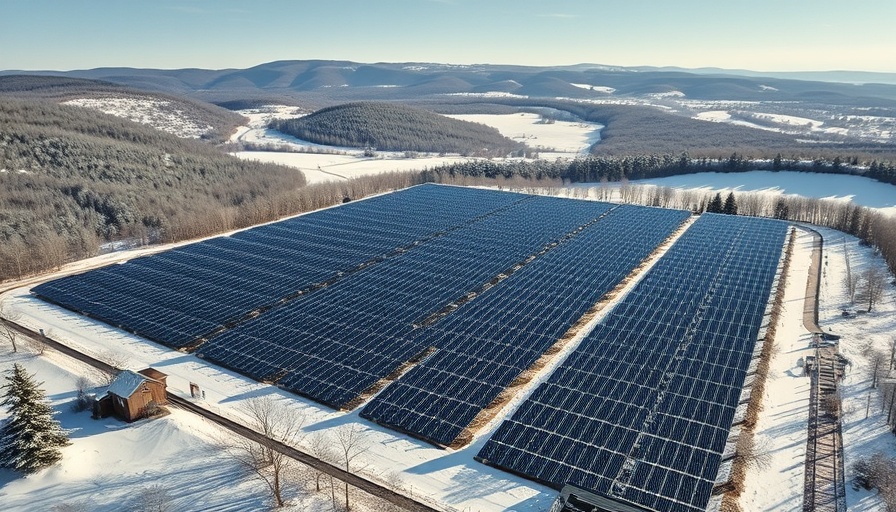
Transforming Legacy Landscapes: Solar Power's Bright Future
In a significant move towards sustainable energy, a 26MW solar site has been established on a repurposed coal mine, demonstrating how renewable energy can thrive on former fossil fuel sites. This project not only signifies a shift towards greener alternatives but also highlights the potential of innovative uses for undervalued land. Solar energy advocates believe this initiative could spark more such projects across the country, particularly in regions where coal mining has left economic and ecological scars.
Why This Matters: Reducing Environmental Footprint
The conversion of coal mines into solar farms serves a dual purpose: minimizing the ecological damage of mining while generating clean energy. As communities grapple with the legacies of coal, this transformation represents an opportunity to mend the environmental footprint left behind. It also underscores a proactive approach to addressing climate change by harnessing unused land for renewable sources.
A Step Toward Energy Independence
Heavy reliance on fossil fuels has made many regions vulnerable to fluctuations in energy prices and supply instability. Establishing solar sites in formerly mined areas is not just an advantage for the environment; it also contributes to regional energy independence. By diversifying energy sources, communities can better withstand economic challenges and cultivate a stable, self-sufficient energy system.
Economic Revitalization: Jobs and Investment
The solar industry is rapidly evolving, presenting a growing number of opportunities for job creation. The establishment of solar farms inevitably leads to the need for a workforce skilled in installation, maintenance, and management of these systems. Moreover, this project can attract investment into local economies, transforming areas affected by coal mining into hubs of innovation and sustainability.
Community Perspectives: Mixed Reactions
While many celebrate this green initiative, there are mixed feelings in communities historically dependent on coal. The shift from fossil fuel industries can be jarring, as it brings fears of unemployment and economic displacement for long-time coal workers. To successfully transition, it is crucial for stakeholders to engage local communities and provide support as they navigate this shift.
Future Trends: The Rise of Repurposed Energy Sites
The successful implementation of the 26MW solar project may serve as a precedent for future renewable energy installations on reclaimed land. Experts predict that as the technology continues to improve and costs decline, we’ll witness an increase in similar projects, addressing not only the need for clean energy but also rectifying historical environmental injustices.
What Homeowners Need to Know
For homeowners looking to cut energy costs while contributing to sustainability, this trend is a beacon of hope. Investing in solar energy at home is becoming more accessible and profitable, particularly as more systems come online and energy prices fluctuate. Households are encouraged to consider how they can leverage these changes by installing solar panels on their properties.
Conclusion: A Call to Action for Sustainable Futures
The growth of solar installations on previously mined lands is a clear signal of the potential in renewable energy. Local leaders, homeowners, and businesses are encouraged to explore how they can contribute to or benefit from the rise of solar energy. Engage with your local representatives about renewable energy policies, seek installations for your home, and invest in community projects that promote sustainability.
 Add Row
Add Row  Add
Add 



Write A Comment